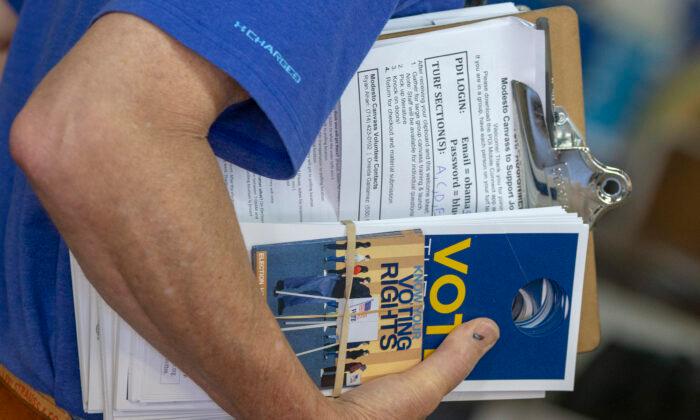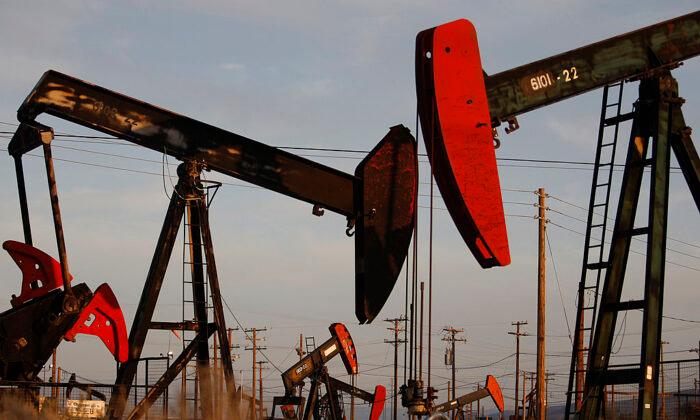Commentary
The
television ads are impossible to ignore. A stern man in a firefighter’s uniform stands beside the wasted ashes of an immolated forest. As a harrowing montage of towering flames, skies filled with smoke, and CO2 belching cars on freeways slide across the screen, exuding masculine authority, he explains “we are in a crisis.” His message is compelling. To save our forests, clean our air, and address the climate emergency, we must vote yes on
Proposition 30.
Despite the vociferous
opposition of the California Teachers Association, and their reliable surrogate, Governor Gavin
Newsom, Prop. 30 looks
headed for victory in November. This is proof, once again, that you can convince California’s electorate to approve anything so long as you claim it will address the climate crisis.
Prop. 30 is clever (
pdf). Its popularity relies on the understandable frustration Californians have over worsening wildfires, which most Californians have been convinced are caused by climate change. Its solution? Slap a 1.75 percent tax on all personal income over $2.0 million per year and use the money to fund “Zero-Emissions Vehicles and Wildfire Prevention.”
The devil is in the details. Of the estimated up to $4.5 billion annual proceeds, 80 percent will subsidize ZEV (zero-emissions vehicle) or EV (electric vehicle) charging stations and rebates, and 20 percent will pay for “wildfire response and prevention.” But of that 20 percent, 75 percent will go to wildfire response, and 25 percent will go to wildfire prevention. Which is to say that out of $4.5 billion per year, five percent will be spent to thin forests, and the other 95 percent will be to either hire more firefighters or to subsidize the EV industry.
To be clear: If every car in California were an EV, it would do nothing to prevent catastrophic wildfires. Even assuming that the planet is experiencing a permanent warming trend, and even assuming cars and other uses of fossil fuels are the reason for that warming, California, at roughly
350 million metric tons of CO2 emissions per year, only contributes one percent of the
35 billion metric tons of CO2 emitted globally each year.
As for using 20 percent of Prop. 30’s funds to pay for fire suppression and fire prevention, the priorities are flipped. Californians are already spending over a
billion dollars per year to put out wildfires. Fire suppression is the primary reason forest fires have gotten so bad in California, and climate change, for all the hype it attracts, is a secondary cause. Cataclysmic wildfires will never be stopped merely by extinguishing them, at least not until every one of California’s 33 million acres of magnificent forests are burnt down to the dirt. To solve the problem of super-fires, California’s forests need to be thinned back to historical norms.
Overcrowded Trees
For over 100 years, and with increasing effectiveness, California’s firefighters have suppressed forest fires that, for millennia, were sparked by lightening and would burn away smaller trees and brush. Up until about thirty years ago, despite suppression of natural fires, commercial logging, cattle grazing, mechanical thinning, and controlled burns kept forest growth in check. As recently as the 1990s, over
6 billion board feet were being harvested every year out of California’s forests. Today that total is down to barely 1.25 billion board feet, and the regulatory process to graze, thin, or burn off undergrowth has become prohibitively expensive and protracted. As a result, California’s forests are tinderboxes.
If you care about such things, every year there’s a super-fire in California, around
100 million tons of CO2 enter the atmosphere. Less abstract and of more universal relevance is the filthy smoke and soot that hangs in the air for weeks and the ash laden silt that fouls the rivers after the first rain. Anyone concerned for the environment might also recognize that trees in California’s forests are stressed and dying not because we’re having heat waves and droughts, but because wherever the root systems of just one tree used to compete for water, now there are seven trees. This unnatural reality is also the reason less of our precious rain percolates into aquifers, replenishes springs, or runs off into streams. The desperately overcrowded tree roots suck up every drop.
A research paper published in March of 2022 by the California Fire Science Consortium (
pdf) concluded the following: “Overall, between 1911 and 2011, tree densities on average increased by six to seven fold while average tree size was reduced by 50%. This shift in contemporary forest conditions resulted from ingrowth with very high densities.” Got that? California’s forests are seven times as dense as they were 100 years ago.
This is the truth that firefighters ought to be proclaiming in front of television cameras, and this is the catastrophe that responsible politicians and public servants ought to be urgently trying to fix, instead of endlessly preening and bloviating about the “climate crisis.” Restoring the timber industry ought to be a top priority. It has been decimated thanks to relentless and misguided assaults by environmentalists. Private investment in logging and milling operations could then finance much of the necessary forest thinning. Encouraging the adoption of
mass timber—cross laminated structural beams that are stronger and weigh less than reinforced concrete—could make harvesting the unwanted and overcrowded smaller trees profitable, since manufacturing this innovative new wood product does not require large diameter trees.
Environmental Reform
Reforming the environmentalist edicts and bureaucratic obstructions that prevent property owners from thinning and conducting controlled burns, or ranchers from grazing their cattle, would attract additional private investment that would help restore California’s forests.
Without private investment as described, thinning California’s forests is impossible. As it is, Prop. 30 will allocate, at most, $225 million per year to forest thinning. Cost estimates to do thinning vary, but the best we may expect on average is around
1,000 per acre. That means these funds, even if most of them aren’t first skimmed to placate armies of
ESG commissars, would restore 225,000 acres per year. That sounds like a lot, but it isn’t. With 33 million acres of forest in California, and with that budget, it would take 150 years to finish a job that has to be repeated every 20 years unless private logging, grazing, controlled burns, and mechanical thinning are once again permitted.
California’s firefighters should be using their substantial political clout in Sacramento to publicly confront an inconvenient truth: environmentalists and state bureaucrats have inspired and implemented policies that are destroying California’s forests. Until those policies are reversed, forests will continue to burn like hell.
Newsom, who has the advantage of being politically unassailable merely because he is slightly less lunatic than every other major politician in California’s ruling party, has decided, just this once, to defy the will of the climate crisis industry. Instead he’s lining up with the CTA in opposition, preserving their apparent determination to make sure they remain first in line to pickpocket California’s wealthiest taxpayers.
But Newsom, along with every other special interest that opposes Prop. 30 in order to make sure their own place at the public trough is undiminished, are lying in a bed of their own making. When the forests burned, Newsom didn’t call for meaningful reforms to forest management. He announced a plan to ban gasoline powered vehicles. Now he is going to get what he wanted. The results will be expensive and mostly symbolic, if not counterproductive.
Views expressed in this article are opinions of the author and do not necessarily reflect the views of The Epoch Times.





